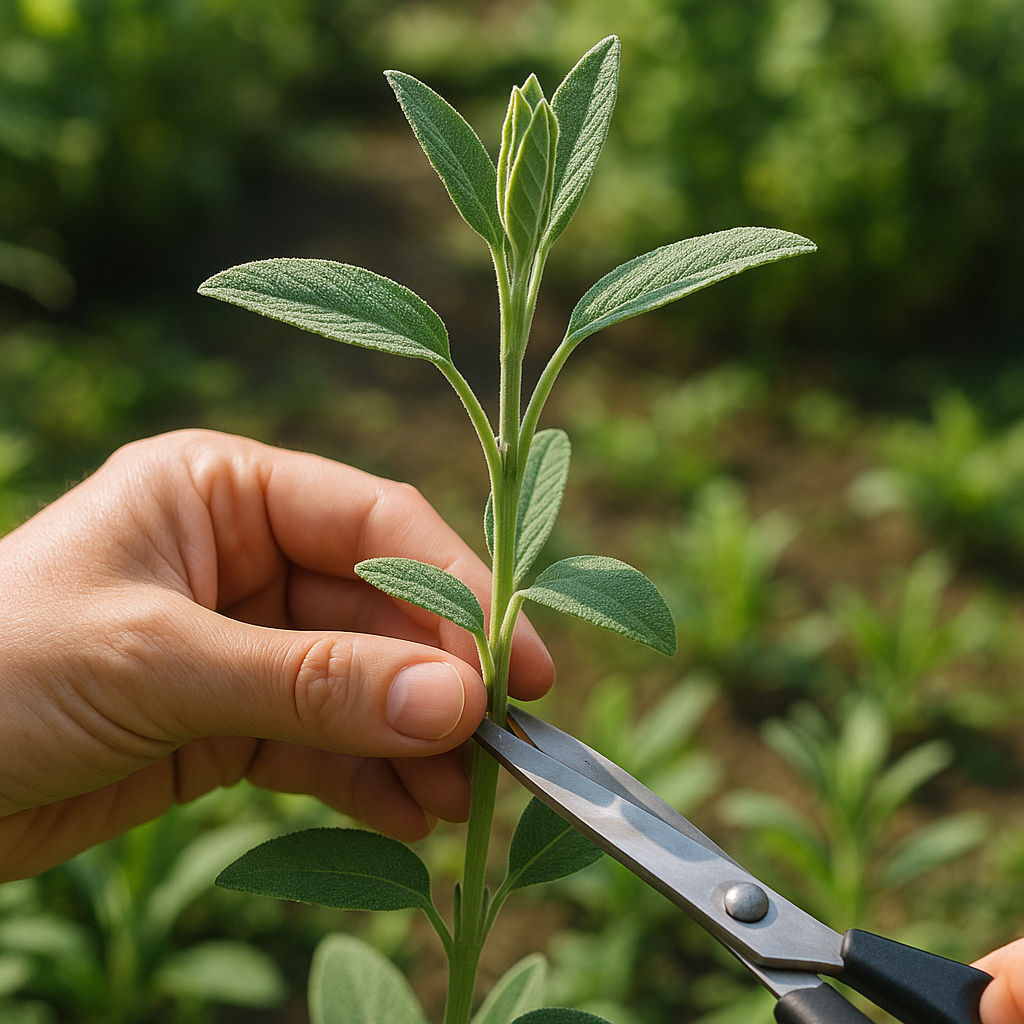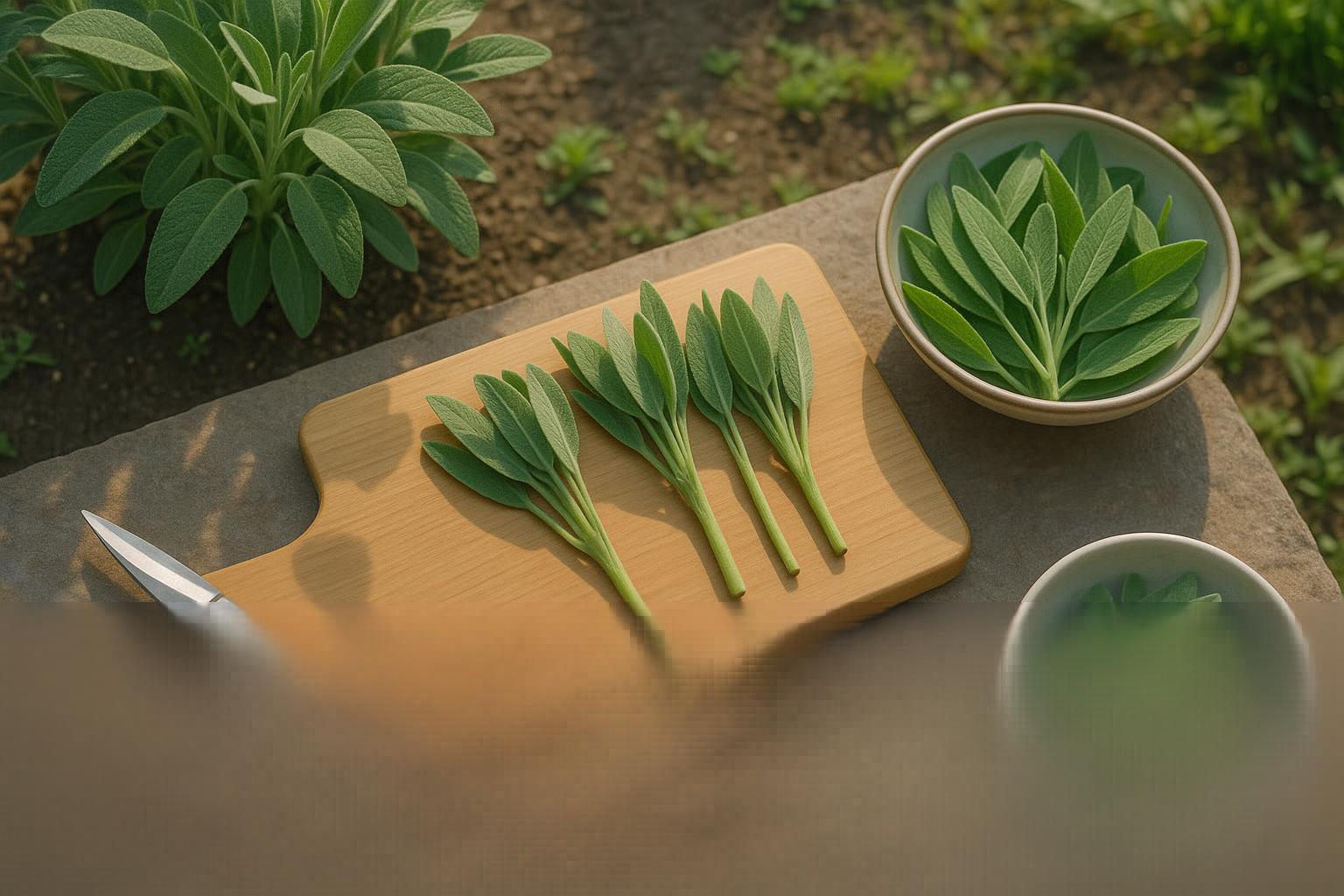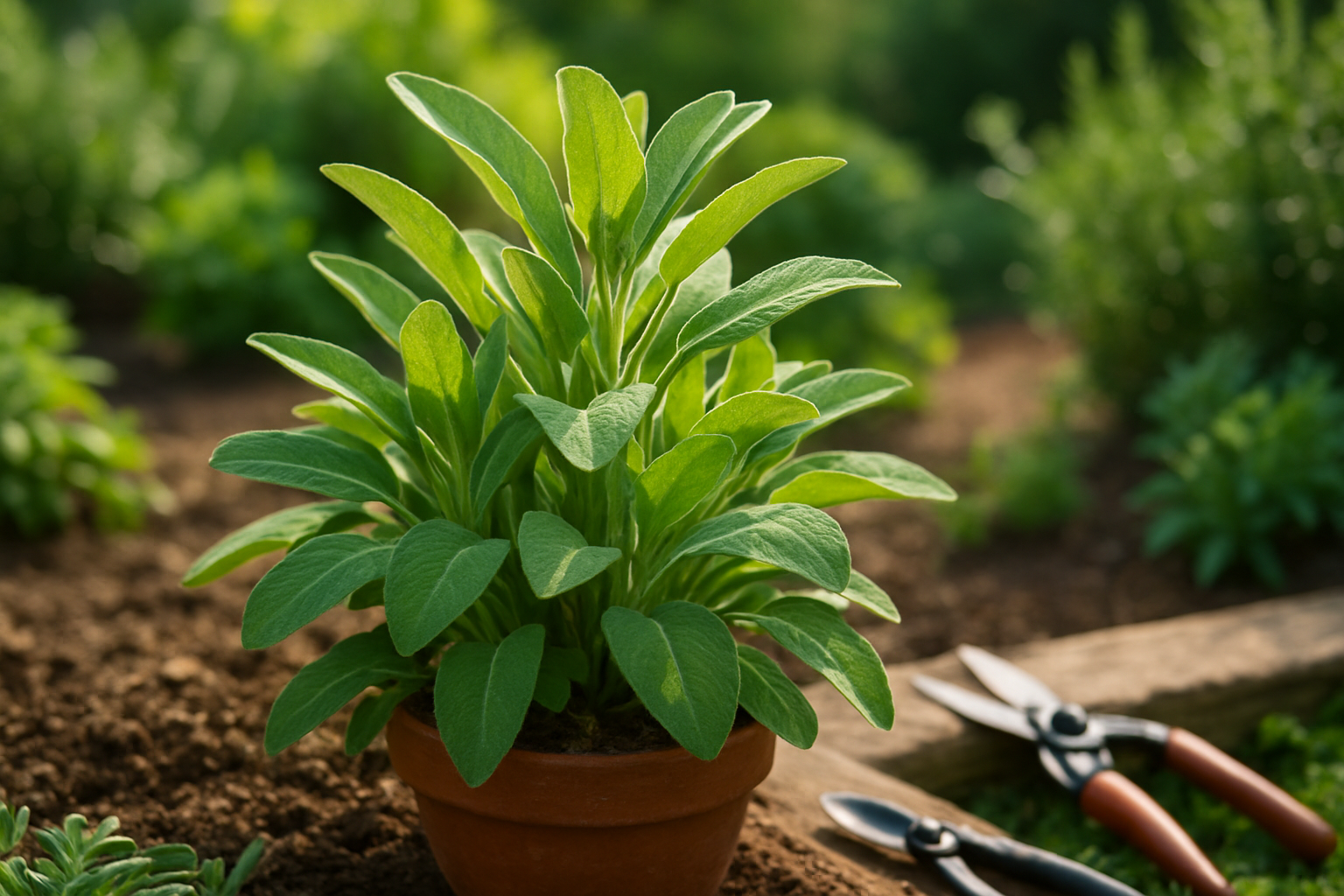When and Why to Harvest Sage

The best time to harvest sage is just before it starts to flower, typically in late spring or early summer. This is when the aromatic oils in the leaves are at their highest, giving you maximum flavor and scent.
If you’re growing sage from seed or a young plant, avoid heavy harvesting during the first year. Instead, gently snip a few leaves here and there to allow the plant time to establish strong roots and healthy growth. Once established, you can harvest up to a third of the plant at a time.
Picking sage before flowering ensures a robust, concentrated flavor for cooking, whether you’re using the leaves fresh or drying them for later. Proper timing also encourages regrowth—cutting stems just above a pair of leaves promotes bushier, fuller plants and prevents leggy, woody growth.
Harvesting regularly for your kitchen not only keeps sage productive but also promotes a tidy appearance and a healthier plant overall. Whether you’re adding sage to roast chicken or drying it for winter stews, thoughtful harvesting keeps both your pantry and your garden thriving.
Preparing to Harvest
Before you start harvesting, having the right tools on hand makes all the difference. Use clean, sharp scissors or pruning shears to make precise cuts, which not only protect your plants but also make the process go much smoother. It’s crucial to sanitize your tools—simply dip the blades in rubbing alcohol or a bleach solution and let them air-dry. This extra step helps prevent the spread of diseases and pests, which can quickly ruin all your hard work.
Avoid harvesting when your plants are wet, as moisture can transfer harmful microbes and increase the risk of mold. Take a moment to identify the healthiest stems—look for ones that are firm, free of discoloration, and showing vigorous growth. This ensures you’re picking the best parts and leaving the plant strong for future harvests.
And don’t be tempted to cut too much at once; overharvesting can stress or damage the plant, sometimes beyond recovery. A good rule of thumb is to never take more than a third of the plant at a time. By following these simple guidelines, you’ll set yourself up for a healthy, bountiful harvest season after season.
Step-By-Step Guide

Harvesting sage safely starts with selecting the right stems—look for healthy, mature branches about 4 to 6 inches long. These segments work best for culinary use and help encourage your sage plant to flourish.
Never take more than one-third of the entire plant at a time; this ensures your sage shrub stays strong and continues growing throughout the season. When you’re ready to cut, use sharp, clean scissors or pruning shears and snip just above a leaf node or where the stem branches. This technique promotes new growth and prevents the plant from becoming leggy or sparse.
Only harvest from the top and outer parts of the plant, avoiding stems that appear weak, woody, or underdeveloped, as these are important for the plant’s overall health.
During peak growing months—typically from late spring through early fall—you can harvest sage every few weeks. Always allow time between cuttings so the plant can recover. For a typical backyard sage plant, try harvesting every 2 to 3 weeks, but monitor your plant’s regrowth and adjust your schedule as needed.
Remember, a little patience goes a long way; taking only the healthiest, most mature stems will reward you with robust harvests all season long.
Aftercare
After harvesting your sage, gentle aftercare ensures your plant bounces back stronger. Start by watering thoroughly, as cutting back stems can stress the plant and it will need moisture to recover—just don’t overdo it, since soggy roots can cause rot.
Hold off on fertilizing immediately after harvesting; giving nutrients right away can encourage weak growth while your sage is still regaining strength. Make sure your plant gets plenty of sunlight, ideally six to eight hours daily, to fuel healthy regrowth.
Check for any damaged or yellowing leaves and snip them off with clean scissors—this prevents disease and keeps energy focused on healthy parts.
For long-term vigor, prune your sage regularly by trimming back the tips. This encourages your plant to grow side shoots, leading to a fuller, bushier shape instead of becoming tall and leggy. A simple rule is to never take more than one-third of the plant at a time, allowing it to recover between trims.
Paying attention to these small details not only helps your sage thrive after harvest but also extends its productive life for seasons to come.
How to Dry and Store Harvested Sage
Drying and storing harvested sage is simple but requires a few mindful steps to preserve its signature aroma and flavor for months. The most common method is air drying: gather small bunches of sage, tie the stems with string, and hang them in a warm, well-ventilated spot out of direct sunlight—a kitchen or pantry works well.
In humid climates, or if you want a faster method, use a food dehydrator set to 95–110°F. Spread the sage leaves on trays in a single layer and check them every hour until they crumble easily. Alternatively, you can arrange the leaves on a baking sheet and use your oven’s lowest setting, leaving the door slightly open for airflow. Be sure to check frequently to prevent scorching.
Once dried, gently crumble the leaves only if you plan to use them right away; otherwise, keep them whole to retain their essential oils and flavor. Store the sage in airtight jars or containers, away from light and heat—think a cool cupboard or pantry. Label your containers with the harvest date and be sure to close them tightly after every use.
By keeping your sage out of sunlight, heat, and moisture, you’ll preserve its potency, ensuring each pinch delivers fresh garden flavor for several months.
Pro Tips for Harvesting Sage Successfully
For the best sage harvest, aim to pick leaves in the morning after the dew has dried but before the sun gets too hot—this is when essential oils are most concentrated, making the flavor richer.
Rotate your harvest locations on the plant, never taking more than one-third of the leaves from a single stem at a time. This gives the plant time to recover, prevents stress, and ensures a steady stream of fresh, healthy growth.
Avoid harvesting during flowering; the plant devotes energy to blooms, so leaves may be less potent and growth slows.
If you want even more sage in your garden, consider multiplying your plants by rooting cuttings in water or moist soil. Take a 4-inch green stem, remove the lower leaves, and watch roots develop in a couple of weeks.
Common mistakes to steer clear of include:
- Overharvesting, which can stunt growth or kill young plants.
- Neglecting consistent watering—sage prefers slightly dry conditions but does need a soak in very hot weather.
- Snipping tough, woody growth, which doesn’t regrow well and results in low-quality leaves.
Instead, focus on tender, newer shoots for both the best harvest and a thriving sage plant.
Common Questions about Harvesting Sage
Many gardeners wonder if sage can be harvested year-round, and the answer depends on your climate. In mild regions where sage remains evergreen, you can snip leaves throughout the year. However, it’s best to take larger harvests in late spring or early summer when the plant is actively growing. During winter, limit your cutting to avoid stressing the plant while it’s dormant.
Another common question is how much sage to leave behind after harvesting. A good rule of thumb is never to remove more than one-third of the plant at a time. For a healthy bush, you can take a few stems from each side, always leaving plenty of leafy growth to help the plant photosynthesize and recover.
Finally, many people ask if sage will grow back after cutting. Rest assured, sage is a hardy herb that bounces back quickly when pruned properly. In fact, regular light harvesting encourages bushier, more robust growth. For best results, use sharp scissors, cut just above a leaf pair, and avoid trimming woody stems.
If you stick to these simple guidelines, your sage plant will thrive and reward you with fresh, fragrant leaves season after season.
